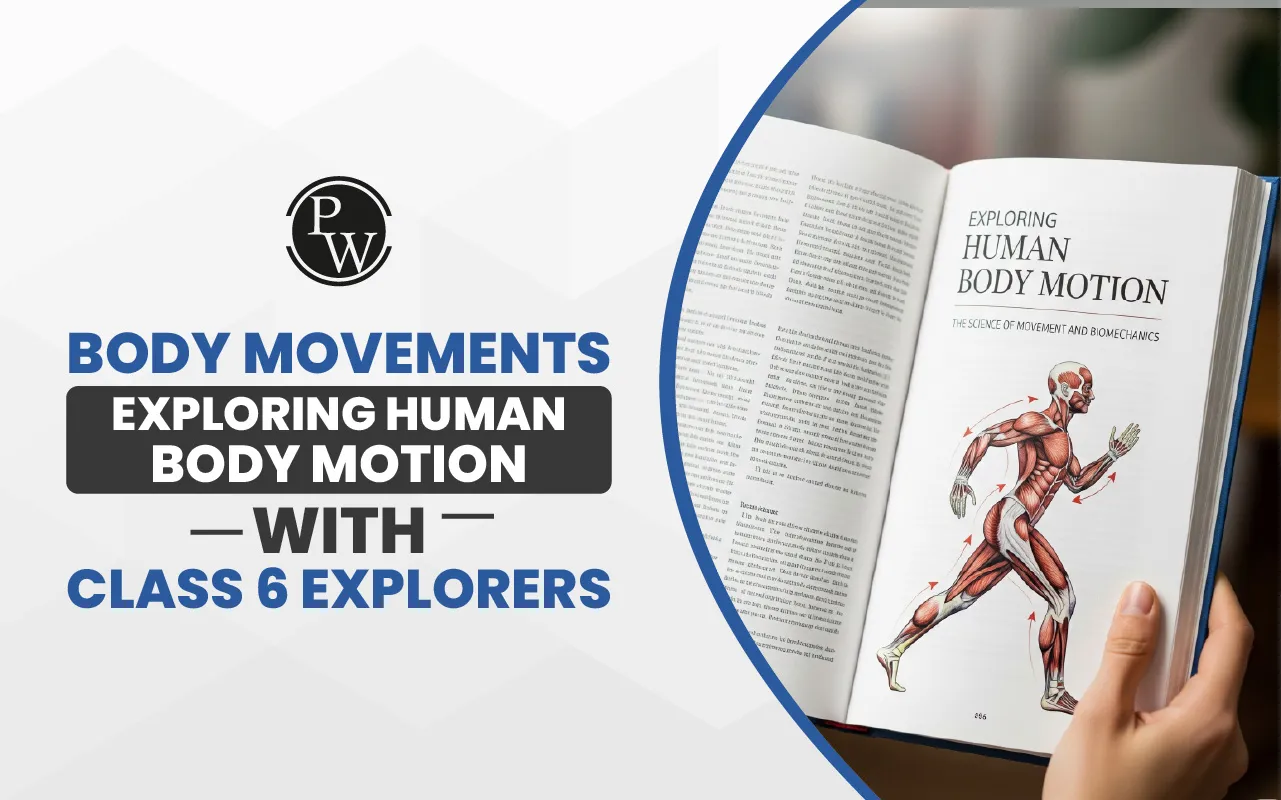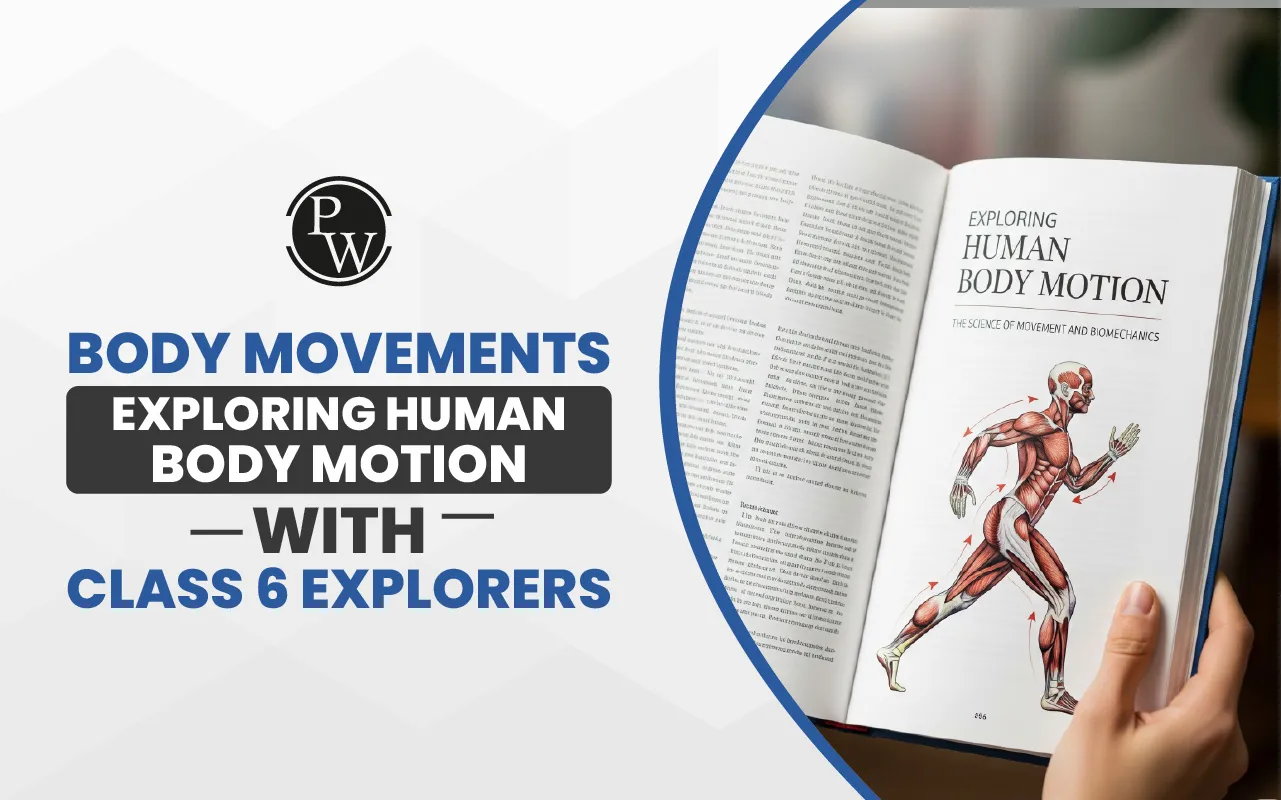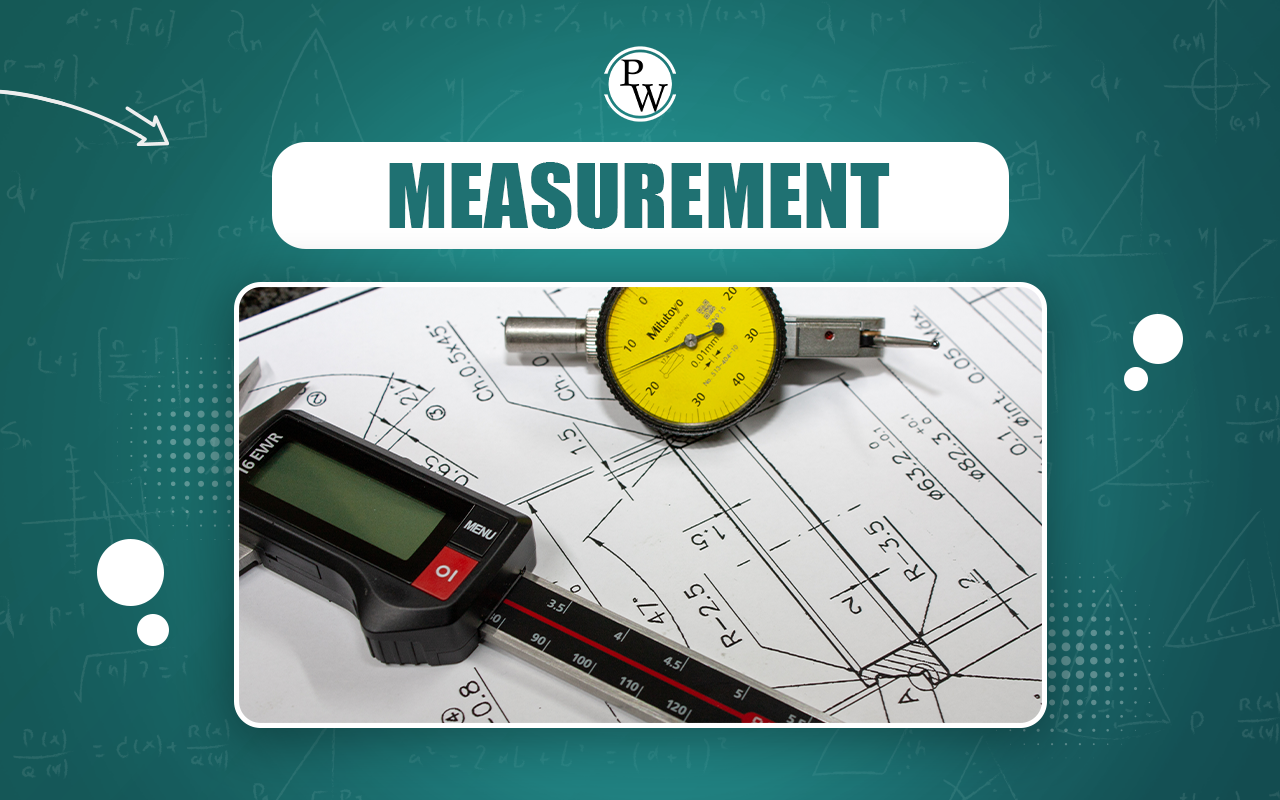

Body movements are a universal language that transcend cultures, languages, and barriers. From a simple nod of agreement to an intricate dance performance, our bodies communicate a wealth of information. The way we move not only conveys our emotions and thoughts but also influences how others perceive us.
In this blog, we will talk about Body Movements , their significance in communication, culture, psychology, and personal development.
Types of Joints
| Joint Type | Description | Example |
| Ball-and-Socket | Rounded end of one bone fits into a cup-like socket of another | Shoulder, Hip |
| Hinge | Allows movement in one plane like a door hinge | Elbow, Knee |
| Pivot | Allows rotation around a central axis | Neck (Atlas-axis joint) |
| Gliding | Flat surfaces glide against each other | Wrist, Ankle |
| Saddle | Concave and convex surfaces fit together | Thumb (Carpometacarpal) |
| Condyloid (Ellipsoidal) | Oval-shaped projection fits into an elliptical cavity | Wrist (Radiocarpal), Knuckles |
| Fixed (Fibrous) | Immovable, held together by fibrous tissue | Skull sutures |
| Cartilaginous | Connected by cartilage, limited movement | Vertebrae (Intervertebral) |
| Synovial | Most common, fluid-filled cavity allows various movements | Knee, Shoulder, Hip |
Types of Body Movements
- Flexion: Flexion is the process of bending a joint, which results in a decrease in the angle between the involved bones or body parts. For instance, when you bring your forearm closer to your upper arm, you are performing flexion at the elbow joint.
- Lateral Flexion: Lateral flexion involves bending the body or body parts sideways. For instance, bending your neck to the side so your ear approaches your shoulder is an example of lateral flexion.
- Dorsiflexion: Dorsiflexion is the movement that brings the top of the foot toward the shin or the superior surface of the foot toward the leg. It's the action of lifting your toes towards your shin.
- Plantar Flexion: Plantar flexion is the opposite of dorsiflexion. It involves pointing the toes away from the shin or flexing the foot downward. When you stand on your tiptoes, you're performing plantar flexion.
- Extension: Extension is the opposite of flexion. It involves straightening a joint and increasing the angle between the bones or body parts. For instance, straightening your arm at the elbow is an example of extension.
- Hyperextension: Hyperextension occurs when a joint is extended beyond its normal range of motion. This can be seen in activities like bending the neck backward to look at the ceiling.
- Abduction: Abduction is when a body part moves away from the midline of the body. An example of abduction is raising your arm sideways away from your body.
- Adduction: Adduction is the opposite of abduction. It involves moving a body part toward the midline of the body. Bringing your arm back down to your side from an abducted position is an example of adduction.
- Transverse Abduction: Transverse abduction is the movement of a body part away from the midline in a horizontal plane. This movement is typically seen in activities like spreading your fingers apart.
- Transverse Adduction: Transverse adduction is the opposite of transverse abduction. It involves bringing a body part back toward the midline in a horizontal plane. This could be seen when you bring your fingers together after spreading them apart.
- Supination: Supination refers to the movement of the forearm or foot where the palm or sole is turned upward. A helpful way to visualize supination is by imagining holding a bowl of soup in your hand and tilting it upwards.
- Pronation: Pronation is the opposite of supination. It involves turning the forearm or foot so that the palm or sole faces downward. Imagine emptying the bowl of soup from your hand.
- Protraction: Protraction involves moving a body part forward or pushing it away from the midline. An example is the protraction of the shoulder blades, which occurs when you push your shoulders forward.
- Retraction: Retraction is the opposite of protraction. It involves moving a body part backward or pulling it toward the midline. For instance, squeezing your shoulder blades together is retraction.
- Elevation: Elevation refers to raising a body part. For example, shrugging your shoulders is a movement of shoulder elevation.
- Depression: Depression is the opposite of elevation. It involves lowering a body part. Relaxing your shrugged shoulders is a movement of shoulder depression.
- Inversion: Inversion involves turning the sole of the foot inward, toward the other foot. This movement is commonly used in activities like walking or running.
- Eversion: Eversion is the opposite of inversion. It involves turning the sole of the foot outward, away from the other foot.
- Opposition: Opposition is a unique movement of the thumb in which it touches or comes in contact with the tips of the other fingers on the same hand. This movement allows for precision gripping.
- Lateral Rotation: Also known as external rotation, it involves rotating a limb or body part away from the midline. For instance, turning your leg outward at the hip joint is lateral rotation.
- Medial Rotation: Also called internal rotation, this movement is the rotation of a limb or body part toward the midline. Rotating your leg inward at the hip joint is an example of medial rotation.
Locomotion
Animals move in different ways to travel from one location to another. The animal kingdom showcases a remarkable array of locomotion strategies that have evolved over millions of years. These strategies have emerged as adaptations to various ecological niches, anatomical structures, and environmental obstacles.
- Walking and Running: Many animals, including humans, employ walking and running as their primary modes of locomotion. These forms of terrestrial locomotion are characterized by a cyclic pattern of movement where limbs alternate between support and movement phases. Walking involves maintaining at least one limb on the ground at all times, while running is characterized by a moment of suspension when all limbs are off the ground.
- Swimming: Aquatic animals have evolved diverse methods of swimming. Fish use undulating movements of their bodies and fins to generate thrust and move through water. Marine mammals, such as dolphins and whales, have adapted to their aquatic environment with streamlined bodies and powerful tails, allowing them to propel themselves efficiently through water. Some animals, like octopuses, use jet propulsion by expelling water through a siphon, enabling rapid bursts of movement.
- Flying: Flight is a remarkable mode of locomotion that has evolved in birds, insects, and bats. Birds achieve flight through a combination of flapping their wings and adjusting the shape of their feathers to generate lift and thrust. Insects, on the other hand, use rapid wing movements to generate lift and maneuver through the air. Bats are the only mammals capable of sustained flight, achieved through their modified forelimbs forming wings.
- Crawling and Slithering: Animals such as snakes, worms, and caterpillars move by crawling or slithering. Crawling involves the movement of limbs against a substrate, while slithering is characterized by undulating lateral movements of the body. Snakes use a unique form of locomotion where they push off objects in their environment, creating a wave-like motion that propels them forward.
- Jumping and Leaping: Jumping and leaping are common forms of locomotion utilized by a variety of animals, such as kangaroos, grasshoppers, and fleas. These creatures rely on their strong leg muscles to generate immense force that propels them off the ground, enabling them to cover substantial distances in just one swift bound. This particular mode of movement proves particularly advantageous for evading predators or swiftly capturing prey.
- Gliding: Some animals have evolved adaptations that enable them to glide through the air. Flying squirrels, sugar gliders, and even some reptiles have membranes of skin or other structures that allow them to glide from tree to tree.
- Burrowing and Tunneling: Burrowing animals like moles, rabbits, and prairie dogs have specialized adaptations for moving through soil and creating tunnels. Their strong forelimbs and compact bodies help them excavate and navigate underground environments efficiently.
- Sessile Locomotion: Certain animals that are fixed in one place, like corals and barnacles, exhibit a form of locomotion known as sessile locomotion. These organisms extend their appendages or structures to capture food, reproduce, or interact with their surroundings without physically moving.
Amoeboid Movements
Amoeboid movements, also called amoeboid locomotion, are a distinct way in which certain cells, such as amoebas and particular immune cells like neutrophils and macrophages, move. This movement style allows cells to modify their shape and navigate with a fluid-like motion. It's akin to how an amoeba extends and withdraws its pseudopods, often referred to as "false feet," to propel itself forward.
Amoeboid movement is primarily achieved through the rearrangement of the cell's cytoskeleton, a dynamic network of protein filaments that provides structural support and aids in cell movement.
The main components involved in amoeboid movements are actin filaments and myosin motor proteins. Actin filaments polymerize and depolymerize, which allows the cell to extend and retract pseudopods, while myosin proteins help generate the force required for these movements.
The process of amoeboid movement can be broken down into a few key steps:
- Protrusion: The cell extends pseudopods, which are temporary projections of the cell membrane and cytoplasm. This is facilitated by the assembly of actin filaments at the leading edge of the pseudopod.
- Attachment: The leading edge of the pseudopod attaches to a substrate, such as the surface over which the cell is moving. This attachment provides a point of leverage for the cell to exert force.
- Contraction: Myosin motor proteins interact with actin filaments, causing them to slide past each other. This generates force, allowing the cell to contract and pull itself forward.
- Detachment: The trailing part of the cell releases its attachment to the substrate, allowing the cell to move forward without being anchored.
- Relaxation: Actin filaments at the rear of the cell depolymerize, causing the rear end to retract and ensuring that the cell's shape remains flexible and adaptable.
This process can repeat in a cyclical manner, allowing the cell to move in a direction guided by the signals it receives from its environment. The ability of cells to perform amoeboid movements is crucial for various biological processes, including wound healing, immune responses, embryonic development, and even cancer cell migration.
Amoeboid movements are not confined to single-celled organisms; multicellular organisms also rely on similar mechanisms for certain cellular movements. For example, during embryonic development, cells undergo amoeboid-like movements to rearrange themselves into the appropriate tissue layers and structures.
Body Movement in Other Animals
Body Movement in Earthworms
Earthworms exhibit remarkable body movement in animals through peristalsis, a rhythmic contraction and relaxation of muscles along their segmented bodies. This unique locomotion enables them to burrow efficiently through soil, aiding in aerating and enriching it.
Circular and longitudinal muscles work in tandem, creating wave-like motions that propel them forward or backward. Each segment's bristles anchor, preventing backward sliding. Additionally, the hydrostatic skeleton allows them to control body rigidity and flexibility.
This intricate coordination of muscles and fluid-filled compartments showcases the adaptability of earthworms in their subterranean habitats while underscoring the elegance of nature's design in even the simplest creatures.
Body Movement in Snails
Snails, though slow, exhibit fascinating body movements. Their muscular foot propels them forward in a rhythmic, wave-like motion, aided by a mucus layer for smoother travel. This unique locomotion involves the contraction of circular and longitudinal muscles, allowing the foot's expansion and contraction.
Snails' spiral shells also contribute to movement; muscles inside enable controlled retraction for protection. While their pace is unhurried, the intricate coordination of muscles and mucus showcases the efficiency of snails in navigating diverse terrains, showcasing adaptation at its finest within the constraints of their simple yet effective body structure.
Body Movement in Cockroaches
Cockroaches exhibit remarkable body movement adaptability. Their streamlined exoskeleton allows swift locomotion, with three pairs of legs facilitating scuttling and climbing. The abdomen's rhythmic contractions enable swift running, aided by specialized pads that enhance traction.
Remarkably, cockroaches navigate confined spaces using an intricate coordination of leg, antennae, and body movements, adapting seamlessly to obstacles. When threatened, they display rapid, zigzag escapes.
Their body movement prowess showcases millions of years of evolution, enabling survival in diverse environments. This resilience and agility make cockroaches intriguing subjects for biomechanical research, inspiring innovations in robotics and locomotion studies.
Body Movement in Fishes
Fish exhibit a remarkable diversity of body movements that are essential for their survival and adaptation to aquatic environments. Through undulating their bodies and fins, fish achieve locomotion, with different species utilizing specific techniques such as anguilliform (eel-like), carangiform (fast-starting), or oscillatory (fin-based) motions.
Fins, acting like control surfaces, provide stability, maneuverability, and propulsion. Some fish even use pectoral fins to "walk" along the seabed. Body movements also aid in feeding, predator avoidance, and social interactions. Overall, the intricate coordination of body movement and fin manipulation enables fish to thrive in their watery habitats, showcasing the marvels of aquatic biomechanics.
Body Movement in Birds
Body movement in birds is a fascinating display of adaptation and efficiency. Their diverse range of motion serves essential functions such as flight, foraging, and courtship. Powered by breast muscles, avian flight involves synchronized wing flaps and body adjustments for stability and maneuverability.
Ground-based movement varies from the purposeful strides of ostriches to the hopping of sparrows, each tailored to their ecological niche. Intricate courtship dances and displays are captivating examples of body movement for mate attraction. Overall, birds' remarkable body movements showcase evolution's artistry in creating forms finely tuned to aerial and terrestrial lifestyles.
Final Thoughts
The world of animal body movements is truly fascinating. From the graceful leaps of gazelles to the soaring flights of birds, nature's creatures have evolved unique ways to navigate their environments. By studying these movements, we gain a deeper appreciation for the intricacies of the animal kingdom and the remarkable ways in which they adapt and thrive.
So, the next time you observe an animal in motion, take a moment to marvel at the beauty and efficiency of their body language.
Are you ready to take your science skills to the next level? With the Fundo Experiment Kit, you can learn about the latest scientific discoveries and explore the world around you in a whole new way. With over 20 experiments to choose from, you'll have hours of fun and educational learning. Plus, the kit comes with a set of videos that explain how to perform each experiment step-by-step. So what are you waiting for? Order your Fundo Experiment Kit today and start learning science the fun way!
Related Links
Body Movements FAQs
How do animals adapt their body movements to their environment?
What is the significance of camouflage in animal body movements?
How do aquatic animals' body movements differ from those of terrestrial animals?
Why do some animals use intricate mating dances as part of their body movements?













